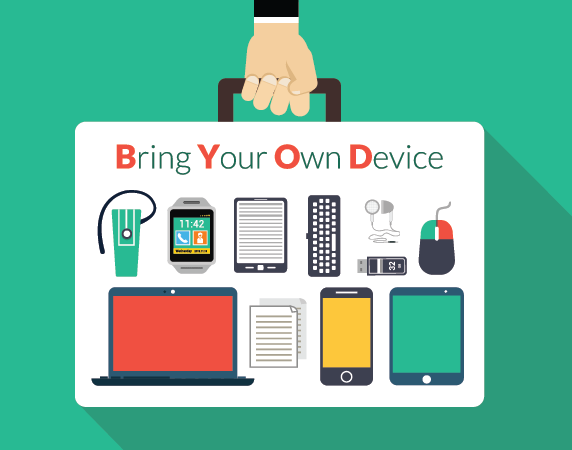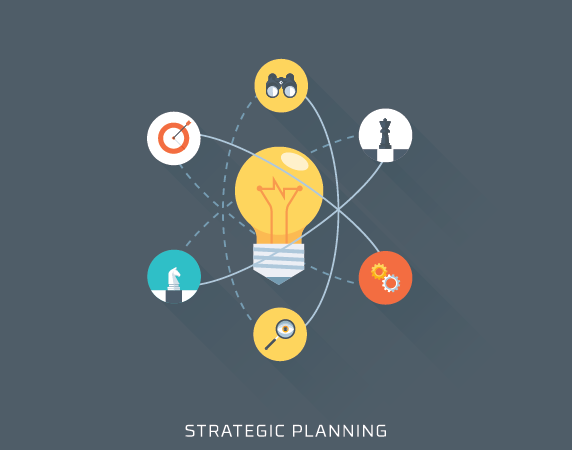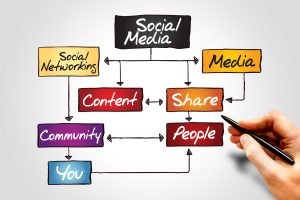Category: Business
For how long have you been in the field service industry? For a considerably long time I’m assuming.
In that case, you might have a fairly clear idea of where customer expectations are headed. You might even have gone over some of the overwhelming numbers on the level of service expected from providers like you, in the coming years.
If you haven’t already, well, according to a report by the American Express, about 35% of customers believe that companies who provide “excellent customer service” have “earned their business” and about 25% of them were found to place a high value on excellent customer service. For more interesting facts on this, read Is Your Business Ready for the Next Generation of Customer Service?
In our previous blog, we had discussed the importance of being proactive in field service and how much of a positive impact it can have in your business.
So now that you know that it is indeed going to be a matter of survival for you in the near future, here we have some pointers for you to get started on the major shift.
First off, you need to know that it doesn’t have to be an expensive or time-consuming process. You are simply putting your customers first, as the bottom line of your proactive strategy. And we all know, it will be beneficial to your business, without a doubt.
Secondly, you need to make a few changes in your “online presence”.
Increase your availability: This does not mean just leaving a contact number on your website and addressing issues as and when they come. It means you should make yourself completely available to be contacted by your customers across a number of channels apart from your website, like email, phone, and most importantly, the social media. This makes it possible for customers to contact you whenever they want and through the channel of their choice, making your service much more effective.
Provide the basic help: This means that you would be allowing your customers to help themselves on small issues. You can do that by putting up an an FAQ page on your website or by providing a step-by-step guide on how customers can fix certain small issues themselves. More like a DIY guide. This in a way empowers them, which can work to your advantage ultimately.
Now let’s get into the steps:
Engage in the Conversations about you on Social Media
Let’s face it. Whether you like it or not, your customers are going to talk about you, either in private or through the social media (which is the case oftentimes). Now, when they do talk about you on social media channels like Twitter and Facebook, you need to pay attention and see it as an opportunity for you to delight your customers, regardless of whether the conversation is in a good context or a bad context. Engage in those conversations and try addressing more of your customers’ needs.
For example, Morton’s Steakhouse, one of the best steak restaurants in the world, found on their Twitter feed that one of their customers – a popular blogger, Peter Shankman had mentioned them in his tweet, suggesting they deliver a steak to him when he landed at the airport.
And believe it or not, waiting for him at the airport was a Morton’s employee, with his steak!
That’s the kind of service that delights customers.
This is how you can possibly address positive comments or just wiggle your way into delighting your customers through random comments as well.
As for negative comments or complaints, you could respond by apologising first and then go on to explaining how or what you can do to fix the issue.
Ask for feedback and make sure everything is ok
Feedback is by far one of the most effective and simple ways to get to know your customers better and to understand exactly what they want. It is only when you know what they want, that you can serve them better. And checking in every once in a while can not only ensure that things are alright but also allow you to identify the areas where you need to work on and take steps to correct them before your customers start feeling dissatisfied.
For this purpose, here are some things you could do:
- Have an easy-to-fill feedback form on your website
- Send across simple surveys to your customers. You can easily create surveys, manage them as well as get useful insights from the responses using simple survey tools or applications.
- Go through and analyze your customer service tickets to address some of the most common questions or needs
- You can even ask your customers personally, or interview your customers about what they think of your services and how you could further help them
Admit Mistakes as Early as Possible
The age old saying “Honesty is the best policy” holds good in business too. If you’ve made a mistake or if there is an issue that could cause an inconvenience to your customers, it is always better to let them know of it, well beforehand.
It is not a good idea to have them find it out when they were probably relying on your good service at that point in time.
For example, if you’ve shipped a product or placed an order for a service, a day later than promised, you need to let them know through an email or a phone call, rather than keep them waiting in ignorance.
If you have a software upgrade scheduled, you need to inform your customers about the upgrade well beforehand, so that they can be prepared and don’t end up being unable to access the information they need, when they need it.
Reward your Customers as a ‘Thank-You’ for their Support
Rewarding is one of the most effective ways to build customer loyalty, above customer satisfaction. In fact, rewards and offers are the second and third best ways to increase customer loyalty, the first being excellent service of course.
Proactive rewards like discounts in between purchases or special offers to fix issues that the customers probably didn’t even know they had are good examples.
You could also offer discounts or refunds in cases where customers are not happy when you’ve made a mistake and have acknowledged it too.
Sending your long-term customers some discounts, a little ahead of their subscription renewal, in the form of a reminder is also a good way to thank your customers and make sure they stay.
These are some of the ways in which you could get started on shifting to your proactive service strategy. Once you get started, you could probably find more ways and turn it into more of a habit. That way, you not only dodge the chances of any risk but also build your customer base and goodwill. In no time, you will be able to stay ahead in the competition and be a leader in the field service industry.
Stay up to date on what's new

Featured Blogs
Stay up to date on
what's new



Talk To Our Experts
What seemed to be a far-fetched idea or an unclear, undefined entity, a few years ago, is what is ruling the world of business today. Enterprise mobility.
People are all for the concept of “bringing their own devices” at their workplaces these days. More than 60% of workers have access to their company data or work through their smartphones and tablets. Interestingly, only about a third of business enterprises have any kind of BYOD (Bring-Your-Own-Device) management strategy in place.
“People are bringing their own devices, but in many cases, they and their companies are not taking care of those devices and the applications on them appropriately.”, says Richard Absalom, consumer impact technology analyst at Ovum.
It is very important to have a proper Enterprise Mobility Management strategy for every organization, especially since most of them are spending a pretty significant amount on mobility.
Here is what you can do to better manage enterprise mobility.
Involving Everyone
Any BYOD policy has to be developed with inputs from all over the organization. Driven by the CIO, BYOD management efforts should involve everyone from developers to users to the IT team. Even the human resource and legal departments have to be included. As it means an entire culture change in the organization, it necessitates the need for everyone to be on the same page, about what can and cannot be accessed over personal devices.
Smartphone Technologies
 The use of mobile devices automatically implies the use of various technologies offered by them such as Global Positioning System (GPS) receivers, cameras, audio recorders and other sensors. Widespread use of such technologies across the organization may cause loss of data and even loss of important intellectual property to be looming concerns. Imagine the consequences of loss of an in-house video of an application’s development processes! Worse yet, are the legal implications of the same, or of other videos involving the organization’s officials in compromising positions. Hence, BYOD policies should be formulated after taking into consideration these aspects as well.
The use of mobile devices automatically implies the use of various technologies offered by them such as Global Positioning System (GPS) receivers, cameras, audio recorders and other sensors. Widespread use of such technologies across the organization may cause loss of data and even loss of important intellectual property to be looming concerns. Imagine the consequences of loss of an in-house video of an application’s development processes! Worse yet, are the legal implications of the same, or of other videos involving the organization’s officials in compromising positions. Hence, BYOD policies should be formulated after taking into consideration these aspects as well.
An Exit or Loss Policy
While devising BYOD policies, something that people generally tend to miss out, is an exit strategy. When an employee in any department of an organization leaves, he will be carrying a lot of information concerning his department on his smartphone, with him. This is a huge loss for the organization.
“When an employee leaves, say in sales, and they take all of the contacts on their personal phone, that is a big corporate asset that goes missing.”- Absalom
Hence, you need to develop appropriate theft, loss as well as exit policies. Along with technical issues you need to raise the security stakes. You need to find a balance with all these features and risks, so as to protect your employees’ personal information as well as your business reputation.
Insecure WiFi
 Usage of insecure Wifi networks might need separate provisions in a BYOD policy since their security measures are very limited. For example, some WiFi networks may be labeled as “off-limits” on the basis of security alerts. Devices used in an enterprise should be protected against possible loss of data and attacks. An organization has to make sure that all the personal devices are well in line with the enterprise security standards. Encryption and access control are ways in which valuable corporate data residing on any device can be protected.
Usage of insecure Wifi networks might need separate provisions in a BYOD policy since their security measures are very limited. For example, some WiFi networks may be labeled as “off-limits” on the basis of security alerts. Devices used in an enterprise should be protected against possible loss of data and attacks. An organization has to make sure that all the personal devices are well in line with the enterprise security standards. Encryption and access control are ways in which valuable corporate data residing on any device can be protected.
User Credentials
Credentials for users, such as usernames and passwords, need to be created securely with utmost care. Credentials which may be sufficient for certain kinds of applications may not be suitable for other kinds of applications that need more security. Short number strings for example,while may be appropriate authentication for a user on game leaderboards and scoreboards, they won’t be enough for a social networking application.
All of these practices call for crisp and clear policy guidelines. Their compliance needs to be made mandatory as well. You need to make sure that all your employees are well aware of the rules regarding joining, leaving or altering their role or participation in a BYOD initiative. Signatures on policy agreements need to be made compulsory. Absalom also said that it would be good to have all employees agree to legally upholding their policies and to getting their devices locked on events of it being stolen, lost or compromised in any way.
Hence, if well managed, enterprise mobility can be the best thing that ever happened to your business. Keep the above pointers in mind, embrace mobility and manage it efficiently.
Stay up to date on what's new

Featured Blogs
Stay up to date on
what's new



Talk To Our Experts
How much attention do you pay to your website?
Not so much?
Then it is high time you gave your website it’s due attention, because what you are missing out on, is probably one of the biggest drivers of B2B sales for your business!
That’s right! Your website has way more impact on your business, than you give it credit for.
But hey, you are not alone. Many businesses actually underestimate the potential of their websites, and their influence on B2B sales. Most of them just consider their websites to be just an online brochure to showcase their products and services. Well, the ones that do have a website of their own that is!
There are many businesses that don’t even have an online presence!
Why does your business need a website?
Your website becomes the face of your business in the online world. It becomes your online sales representative, your means of personalization and one of the most effective ways to reach out to your customers. (More on this in a little while)
Hence, it also means that having a rigid and impersonal website, which gives rather generic responses to users’ needs would turn out to be just as good as not having a website. I mean, would you rather be online and be happy and grateful for a few small leads, or do you want to step up and win bigger customers, and gain more credibility through a personalized approach?
So here is what a website can do for your business:
Your Own Online Sales Representative
 As mentioned before, your website can be the one force that brings you more sales. You get to have your own personal sales representative online. If you talk and engage with your visitors in the right way, you can have customers knocking at your door in no time.
As mentioned before, your website can be the one force that brings you more sales. You get to have your own personal sales representative online. If you talk and engage with your visitors in the right way, you can have customers knocking at your door in no time.
However, the way you communicate with your customers through your website can influence the visitors in a great way. Visitors, who are especially business representatives like yourself, do not have the time to tolerate impersonal website pages with extremely sales-oriented and formal content. What they want, is a more personal and approachable site. It is almost like they want their own personal online consultant or a problem solver in a website. You need to be their go-to expert, who can talk to them personally.
It is not a cakewalk though. Here are some tips, for you to get started:
- Problem-oriented content – Instead of providing straight up sales content for your products and services offer more engaging content, along with insights based on actual problems faced by customers and market research data.
- Show proficiency – You can backup all your products and services pages with detailed case studies and whitepapers, to accentuate your relevant experience as well as your proficiency in solving customer’s problems.
- Offer personalized content – Your website visitors are probably going through many other more websites, and have no reason to remember what you are or what you do. Give them a reason to remember you by giving them personalized and relevant content. Show them that you remember them and that you care about them.
Now there are some website nitty-gritties that you can look into too, for personalization.
Personalization
The idea is to get your visitors to feel that you are offering a solution to their problem, rather than pushing or imposing your agenda. You can choose one of several ways to personalize your content.
- Ascribed personalization – where you observe and analyse your prospect’s behaviour, and recommend content like articles and products, based on their search history or browsing history.
- Elective personalization – wherein, you ask your prospects to identify themselves by choosing from various roles like HR, or from different departments, or even industries, which creates transparency, in that both you and the users will know what exactly to expect.
- Hybrid model – where you can combine both ways to further personalize your approach and make things more transparent.
Time for Conversion
 Once you get everything in place, related to gaining more visitors, you can start acting on converting visitors into leads. You can teach your website to handle adaptive CTAs according to each visitor’s browsing or interaction history with your website. You might want to wait until your visitors return to your website, to provide direct CTAs, and not impose them with one, on their first visit, when they might be only looking for some information. Once your visitors get to know you better, things will get easier.
Once you get everything in place, related to gaining more visitors, you can start acting on converting visitors into leads. You can teach your website to handle adaptive CTAs according to each visitor’s browsing or interaction history with your website. You might want to wait until your visitors return to your website, to provide direct CTAs, and not impose them with one, on their first visit, when they might be only looking for some information. Once your visitors get to know you better, things will get easier.
It is always best to have straightforward messages about your company on your site. You want your customers to feel that you are reliable and efficient, and that you are capable of delivering what they expect from you. Hence, all you need to do is talk honestly about your company. You can offer them free insights into your expertise (through blogs, case studies, e-guides, white papers and the like) before they ask, so that you don’t have to keep them guessing what the next step would be. Follow a logical sequence and give them all the information they need straight away.
This way, your website will become one of your primary drivers of sales. Without as much effort you put into other methods of direct marketing, you get to generate a lot of leads and convert them into sales, with just your website. That is how powerful your website can be.
Looking to develop such a website? Talk to our experts today to create powerful and effective websites for your business!
Stay up to date on what's new

Featured Blogs
Stay up to date on
what's new



Talk To Our Experts
How did Nokia – a once leading mobile manufacturer, fall behind in its market and have to struggle from then on, to come up again?
How did the mighty British Petroleum company have to deal with a severe environmental crisis, which went on to become a major PR crisis as well?
The answer to both these questions is “poor communication” or a lack of effective communication. The first silent killer of your business!
According to a detailed analysis of what went wrong with Nokia, and why it is struggling now to convert its many good ideas into successful products, their major problem lies in their habits of communication. They sat through several, pointless strategy discussions over clearly cut out plans about introducing new phone models in the market.
As for British Petroleum, their 2010 Deepwater Horizon Offshore Oil rig disaster, was largely due to “poor communications” and a failure to “share important information”, as per a report on the White House Commission.
These examples show just how important having an effective communication system is in any organization, especially in the field service industry.
Lack of Proper Communication affects Employee Morale
 Information has to be conveyed to the right people at the right time, whether it is an email to the manager, or a phone call to postpone the date of an order. Irrespective of the severity of the miscommunication, it will definitely drain the productivity and efficiency of an organization.
Information has to be conveyed to the right people at the right time, whether it is an email to the manager, or a phone call to postpone the date of an order. Irrespective of the severity of the miscommunication, it will definitely drain the productivity and efficiency of an organization.
Besides that, lack of proper communication can affect employee morale. A collaborative and communicative work environment can boost employee productivity and promote creativity. On the contrary, poor communication can lead to lack of enthusiasm in doing assignments and hinder innovations.
“The effectiveness of communication depends on the relevance of the message, the time it is conveyed in, the person it is conveyed to and the means or method through which it is conveyed.”
Managers and leaders who can effectively manage the flow of communication in an organization, know, that they need to follow a certain set of practices and communication methods – ones that enable them to get closer to employees. They engage employees by encouraging them to take active part in the communication process. They also make sure that their communication efforts are in alignment with the organizational strategy.
The Second Silent Killer
The average American office worker is said to be using around 10,000 sheets of paper on an annual basis. That is to say, if your business has around 20 field representatives and 5 back office managers, that’s 250,000 per year. That’s a rough base for how much your business would be spending on paper every year, not to mention the printing costs as well. The average cost of printing a page comes to over three cents, so you can do the math right?
Apart from these, there are the storage costs. You need to store all of these documents, in an age where filing cabinets are expensive and take up valuable office space too.
Yes! Excessive paperwork could be the second silent killer of your business.
Several surveys have in fact revealed that switching from paper to electronic forms allows business owners to concentrate more on their revenues, as their entire organization spends much less time handling physical documents. On an average, making forms electronic apparently saves about 11 hours of work time per week for employees and about six hours for business owners.
 Imagine the time that could be saved and used for doing more important work, that your field agents usually spend doing paperwork?
Imagine the time that could be saved and used for doing more important work, that your field agents usually spend doing paperwork?
Apart from consuming time, manual paperwork can lead to errors, misplaced or missing sheets or forms and inaccurate reporting, all causing undue issues in your business. Unsatisfied customers and staff can in turn, affect your profitability and business position.
Go Digital!
If your business relies heavily on paperwork or has issues with poor communication, it’s time to change. Go digital. That said, spreadsheets or excel aren’t the proper automation tools, not even for small sized businesses most of the time. If your employees spend over 4 hours daily managing excels for multiple processes, it’s time for you to move into a software solution to automate those. The solution can either be an advanced free tool or custom software according to your preferences.
Finding the perfect digital automation solution for your business involves a lot of calculations and considerations, for which you might want to seek help from experts. Should you feel the need for the same, our experienced automation professionals can help provide the right advice plus the right solution for your business processes.
Stay up to date on what's new

Featured Blogs
Stay up to date on
what's new



Talk To Our Experts
Field service businesses are trying to capitalize on the advantages offered by today’s technologies. Mobile technology, being the most significant among them, has taken the industry by storm, offering increased productivity gains, streamlines work processes, improved field agent communications, increased first-time fix rate, shortened billing cycles, reduced overhead of paper-based field service management and so on. The infographic puts together some recent trends, impacts and state of mobile technology in Field Service Businesses.
Interested in learning more on enabling your field team with mobile technologies? We’d love to know your business requirements and help accordingly, contact our specialist team now.
Share this Infographic On Your Site
Stay up to date on what's new

Featured Blogs
Stay up to date on
what's new



Talk To Our Experts
After several years of living with the Internet of Things (IoT), ubiquity of software, and the BYOD (Bring Your Own Device) phenomenon, which has almost become mainstream now, we have a relatively new phenomenon coming up. The “Consumerization of IT”.
While BYOD, BYOPC and the like, are all elements of consumerization, it is actually much more than all that. It is a broader concept, that makes the end users do pretty much whatever they want, with the IT being powerless to a large extent in order of stopping or controlling them. In many cases, the IT doesn’t even know that they have people doing this.
So what exactly is consumerization of IT?
 Consumerization refers to the proliferation of IT at the place of work, which originates in the consumer market, and is used for professional purposes. It basically involves the usage of consumer-oriented technologies at the workplace. It is a part of the cycle of IT, that emerges in the consumer market and then spreads to the business environment, primarily because consumers use popular technologies and devices like PCs, iPads and tablets in their homes and start introducing them at their work as well. Apart from devices, it also involves the use of online services like data storage, web based email systems and social media channels like Facebook and Twitter.
Consumerization refers to the proliferation of IT at the place of work, which originates in the consumer market, and is used for professional purposes. It basically involves the usage of consumer-oriented technologies at the workplace. It is a part of the cycle of IT, that emerges in the consumer market and then spreads to the business environment, primarily because consumers use popular technologies and devices like PCs, iPads and tablets in their homes and start introducing them at their work as well. Apart from devices, it also involves the use of online services like data storage, web based email systems and social media channels like Facebook and Twitter.
It is completely driven by the employees themselves, as they buy their own devices, use their own online service accounts, download and install their own applications and often use their workplace network connection as well.
Why is it important for marketers?
“Over the next 30 minutes, over 700,00 apps are likely to be downloaded from the app store, up to 21,000 Twitter accounts are likely to be created and Facebook users will have spent around 146 man-days on it”
Consumer behaviour has undergone drastic changes over the past few years, ever since the advent of the mobile era. Their engagement through social media has increased more than ever. According to findings, over the next 30 minutes, over 700,00 apps are likely to be downloaded from the app store, up to 21,000 Twitter accounts are likely to be created and Facebook users will have spent around 146 man-days on it.
These figures only show how fast human interaction across networks is, and how consumers are almost always ahead in things, including technology, before businesses follow.
That way, consumer behaviour can be considered to be one of the major indicators of what might happen in the business world. Since they are always accustomed to new ways of thinking, they start expecting the same level of convenience from businesses as well.
For example, Amazon.com delivers, what can be called a superior shopping experience to its customers. They even have other third party affiliates paying them to make use of this experience. This makes it one of the best B2C companies. Even in the B2B segment, they have the Elastic Cloud Computing (EC2) Solution, which makes them one of the most preferred providers of cloud-based infrastructures in businesses as well.
With these two areas already mastered by Amazon, they could very well consider creating a rating system, just like the one in their consumer site, for B2B products and services as well. Put together with B2B related social media channels, it could become a powerful peer recommendation platform.
This kind of a spillover of consumer shopping, buying as well as using experiences, on business experiences is something that is going to affect product marketers and sales and marketing product management as a whole. In order to get ready for this “consumerization”, marketers might need to create specific and personal plans to analyze things and adapt, while at the same time implementing strategic plans for their entire company as well.
How can marketers adapt
 Just like B2C marketers, who already know that they no longer have total control over their brand, B2B product marketers also need to understand that, with the explosive use of social networks and the media, they need to adapt and listen to conversations going on through the social channels. They need to meaningfully engage with their customers on a regular basis through social media.
Just like B2C marketers, who already know that they no longer have total control over their brand, B2B product marketers also need to understand that, with the explosive use of social networks and the media, they need to adapt and listen to conversations going on through the social channels. They need to meaningfully engage with their customers on a regular basis through social media.
Short, dynamic and engaging content is what businesses need to adapt to the consumerization effect basically. When such effective content gets delivered in different formats across various channels and to the right people, it reflects in the number and quality of your leads.
This way marketers and business officials can thus make use of the consumerization effect, and turn it to their advantage by taking the necessary steps.
As consumerization is something that is increasingly becoming popular, businesses do need to adapt to the phenomenon. Hence, the earlier the better. Analyze the significance of consumerization, its effect on your organization and start making the necessary changes right away.
Stay up to date on what's new

Featured Blogs
Stay up to date on
what's new



Talk To Our Experts
According to data collected from almost 788 small firms by Fasthosts Internet, it is found that there is a huge difference in terms of adopting new technology in the workplace and finding success through using it.
One out of three firms said that they have failed in improving efficiencies, even after adopting business technologies like smartphones, tablets, and other computer software. The paradox here is that almost half of the small firms in the UK have admitted that they regularly purchase new technologies, even if it is without being certain that they need them.
In order to improve efficiency, it is not enough to merely jump on the bandwagon and adopt technology. You need to know the exact kind of technology your company needs and make sure that it is aligned with your business processes. You definitely need to get yourself acquainted with a lot of information related to technology and understand its relevance in your business, for which you will need the help and advice of IT experts.
The numbers that literally indicate the need for an IT professional
Further into the research conducted by Fasthosts Internet, there are several factors which point to the fact that business enterprises need to seek advice from IT professionals for their technological aspects. Let’s take a look at some of them:
 Up to 35% of firms felt that their new technology purchases led them to work longer hours or failed to improve efficiencies in some way. Around 48% found their new technology to have increased efficiency and lead to “smarter working”.
Up to 35% of firms felt that their new technology purchases led them to work longer hours or failed to improve efficiencies in some way. Around 48% found their new technology to have increased efficiency and lead to “smarter working”.- About 74% of small companies, that is to say, a vast majority of them, felt that implementing technology did not free up their employees’ work time, which they had hoped to use for raising the organization’s innovation and scope.
- Only 41% of them found their employees to be enjoying using new technology, while about one in five firms said that they employ staff who are frightened of using new technology.
- A large margin of firms, that is about 85% of them, admitted that they are almost never aware of how to use the new technology in the best way, as and when they are introduced.
- Only 1 in 10 firms has sought help from their IT advisor or their technology provider, in the event of being disappointed with a particular part or aspect of their adopted technology.
Off the list of figures, it is also generally found that many firms struggle with the way they buy as well as use technologies in their workspace. Although almost all of them are well aware of the importance and relevance of using technology, a lot of them find that success on using technology is a hit-or-miss situation. For some, it clicks, while for others it doesn’t.
Why does this happen
According to Stephen Holford, Marketing Director of Fasthosts Internet, “Busy business owners can find the time and advice needed to ensure all technology investments are well placed. An inadequate approach to buying and reviewing solutions can lead firms to miss out on the maximum value of technology.”
 The major reason for such failures is basically the way technology is researched on by the companies. On the need for technology, companies resort to random research about the kind of technology they need to adopt, often leading them to irrelevant or even misleading information. It is on the basis of this haphazard information that they buy their technology. This results in a large number of firms wasting their money on solutions that they probably don’t even need or simply do not perform well.
The major reason for such failures is basically the way technology is researched on by the companies. On the need for technology, companies resort to random research about the kind of technology they need to adopt, often leading them to irrelevant or even misleading information. It is on the basis of this haphazard information that they buy their technology. This results in a large number of firms wasting their money on solutions that they probably don’t even need or simply do not perform well.
What’s worse is that not all of these thoughtless investments are even brought to notice. Only 11% of small firms in the UK, review whether the new technology that they have adopted is working well, each time a new piece or part is introduced. And as mentioned before, not all firms go back to their provider or IT expert on finding that their technology doesn’t work satisfactorily.
What ideally should be one of the first things to do before adopting new technology, that is, seeking the advice of an IT professional, is done by only one in four firms. In effect, only 25% or about a quarter of firms, are doing the right thing.
In order to avoid such failures, business enterprises need to plan technology investments properly and consult IT professionals who know best about the right kind of technology for their business. They need to work closely with suppliers, throughout the purchase.
Once the technology is deployed, businesses need to keep track of its success rate and take necessary steps to overcome shortfalls or errors as and when they occur. They also need to constantly upgrade their knowledge, through advices, case studies, guidelines, and the like.
Have you consulted an IT professional for your business yet? If not, talk to us.
Stay up to date on what's new

Featured Blogs
Stay up to date on
what's new



Talk To Our Experts
How important do you think your company’s IT strategy is?
If you thought you could have some vague estimates figured out, of where you are and where you would like to go, and then you would work out the rest of the elements on the fly, then I’m afraid you too are part of the 50% of firms that don’t consider their IT investments to be important.
That’s right. Most businesses consider investments in IT a huge priority to increase customer and partner engagement, but often end up seeing workforce automation technologies as cost centres, rather than as opportunities for competitive advantage. The main reason for this is the lack of a proper vision, and viable systems necessary to execute the plan.
“A company’s IT plan can decide whether it is going to float above or sink in today’s cutthroat marketplace”
Hence, CIOs, like you, need to have a clearly defined IT strategy to guide your organization towards success. And drawing up such a detailed plan in black and white is not an easy task. You need to take your time to include a number of elements relating to your business and technology. But it also needs to be concise.
Essentials of an effective IT strategy
Here are some elements that an ideal strategic IT plan should have:
- Executive summary – As any business plan or document, a strategic IT plan should also start with the executive summary. It is basically a clear, concise and effective statement that summarizes the major objectives of the IT strategy. These objectives should be in line with the company’s overall goals, vision, and mission, which should all be specified in the document as well. It should also include a rundown of the processes that are going to be followed to achieve the objectives. All this should be done keeping in mind the intended audience, that is, the business.
- Scope review – The scope of the specific requirements of the business is required in an IT plan, to help IT map out the technological needs of the company for the future. This can be done using several methods like conducting gap analysis, industry analysis and even internal assessments like, surveys and interviews. Once the strengths and weaknesses in the operations and procedures are figured out, the technology needs become clear.
- Business Context – The business context is a more detailed and extensive explanation of the specific objectives driving the IT strategy. It also explains the intended end results and targets of the IT plan. It includes the business objectives, priorities as well as a roadmap of the goals, which could be in the form of a visual representation. It should also include metrics that describe the position of the organization’s IT in the present day and the target state that you wish to achieve.
- Strategic initiatives – These include the projects, activities, and initiatives that are essential for achieving the entire IT plan. It can be in the form of a list, along with a statement of purpose meant for IT decision makers to execute the plan effectively.

- Review – The review consists of highlights and major points of the accomplishments of IT in the previous year along with the elements and resource requirements of the current year. It can include a detailed analysis of the company’s progress over the previous year, in meeting goals, with proper explanation as to which were goals were met and which were not, what were the challenges that were faced and the like.
These pointers are sure to help you draft your strategic IT plan. Once the plan is in place, CIOs need to work in close collaboration with all departments of the organization, to direct all efforts towards the discussed goals. Since, all aspects of the plan, including the technology gaps and risks that exist, the means and resources needed to cover them and overall requirements of the business are drawn out, your IT plan will be successful.
Stay up to date on what's new

Featured Blogs
Stay up to date on
what's new



Talk To Our Experts
For a long time now,there has been a seemingly prevalent trend in the world of business. Leading companies or market leaders often fail to stay on top of their industries, as technology or market conditions suddenly change.
For example, Xerox was once the market leader in copier machines, but later on, Canon took over the small-copier space. Wal-mart took over the once popular Sears.
In the software industry too, there was once a time when Apple computers brought in and popularized the idea of personal computing and literally established the standards for user-friendly computing as well. But they went behind by almost 5 years, in the introduction of portable computers from the market leaders in this space.
As you can see, this has been a consistent pattern in most industries. Established companies often invest heavily and aggressively in technologies that are essential to retain their existing customers, but seldom foresee the directions of their future journey together. They fail to focus on investing in certain other advanced technologies that might be important for their future customers. Hence even though they are successful in retaining their current customers and dominating the market, their slack on meeting future demands of customers brings them down.
Why does this happen?
The real reason for losing the wave
From a broad perspective, it may be the result of several issues combined, like a lack of proper planning and execution, short-term investment issues and internal issues too, such as bureaucracy, monotony, inefficiency and the like. But the main reason for this pattern is actually right at the heart of the paradox. All established companies fall prey to one of the most popular and undeniable principles of management – being close with customers.
Even though most business managers have everything under control, customers have a certain dogmatic power over a company’s investments. Businesses always make it a point to direct their activities to what customers want. Whether it’s the introduction of a new product, or new technology or venturing into new channels of distribution, the first priority of businesses is to look up to what customers want – is it something that their customers would want? Is it going to be profitable? Is the market big enough? – the questions are many.
This is how most businesses fall into the cycle. It’s fine as long as the customers are satisfied. But the problem arises when the customers reject a certain new technology or product, because it doesn’t meet their needs as effectively as the company’s current product or technology. In the end, they find themselves being burned by the very technologies or products that their customers led them away from.
From an ongoing study of technological changes, it has been consistently found that most established companies stay ahead in their respective industries, in developing new technologies that address the performance needs of their next-generation customers. However, industry leaders don’t really focus on being in the forefront of commercializing new technologies that don’t meet the initial demands of mainstream customers and focus on appealing to emerging markets alone.
In order to remain on top, businesses need to identify those technologies that serve the next-generation needs of customers, and pursue them only while keeping themselves protected with the technologies and processes that serve mainstream customers as well. There is only one solution for it – creating organizations that remain independent from the mainstream business.
Striking that fine balance, takes time, effort, and most importantly many failures. We might be able to see more businesses in future, embracing this approach.
Stay up to date on what's new

Featured Blogs
Stay up to date on
what's new



Talk To Our Experts
Up until recent times, small businesses had often struggled to grow and scale their operations. This was mainly because it involved heavy investments in IT, and small businesses couldn’t really afford it.
Large businesses always used IT to their advantage – to run as well as maintain day-to-day business operations.
Hence, there has always been a huge difference in the way IT is used for growth and daily operations by small and large businesses.
Thanks to new innovations in IT, this huge gap is now much smaller. Small businesses now have better opportunities to improve and scale more effectively, without being tied down by the past constraints.
Here are some ways in which IT innovations are changing the game for businesses these days:
- Faster revenue generation – Business enterprises can generate more revenue and grow in a number of ways. They could consider introducing new products and earning new opportunities or they could use their already existing client base to tap new clients. Both of these methods call for an effective and timely socialization or onboarding process for their new clients and partners. Inefficient onboarding processes are often one of the main reasons that keep small businesses from scaling effectively.
With new IT innovations like cloud computing, onboarding processes are no longer the burden of IT. As a matter of fact, an organization’s IT team can enable their business managers to set up their own secure connections easily. Such fast and easy data connections can literally shorten the duration of onboarding processes to a matter of a few days. This in turn, leads to shorter time for conversion of a new client into solid revenue. Thus, it facilitates faster growth of the business as well. - Easier advertising – Traditional ways of advertising often involved the television, newspapers, the radio and even magazines. These demanded pretty large sums of money, not to mention the hours spent in brainstorming ideas as well. All of these had their own limitations in reach too. Now with the latest social media outlets, businesses can get their sales in front of potential customers, in a matter of minutes, that too without burning a hole in their wallets. Social media channels like Facebook, Twitter and Pinterest can really help businesses in establishing their names out there effectively without having to rely on bulky advertisements. Businesses can even have mobile applications to get their products in the hands of their possible customers directly. Put together with interactive promotional offers and contests, they can have their sales shooting up in no time.
- Better business networks – Large businesses used to have their networks built around other large businesses as well as a number of established vendors and suppliers so as to make their products available to a large mass. However, small businesses often had their networks limited to other small businesses alone.
Such limited networks hinder an organization’s ability to scale effectively. Thanks to the latest technology innovations, this is not the case anymore. With the right software solutions, any business entrepreneur can collaborate with any supplier – big or small, and integrate them into the supply chain, even if the suppliers do not have the necessary technology for it. Finding and building connections can be entirely automated these days, making the business networks much wider. - Increased ROI – Growth for small business always meant heavy investments in IT. In order to keep up with their competing big players, they simply had to make IT investment a priority. But they could never afford it.
With cloud-based technologies these days, this problem is solved to a great extent. Small businesses can now have access to advanced IT capabilities without making any huge investments in IT infrastructure or hiring an entire IT department. Scaling with the help of cloud technologies can also eliminate the costs involved in maintenance and hardware, while allowing them to sustain their improvements, without getting broke. This helps them bring up their ROI and grow effectively too.
Growth is no more a pain point for small businesses. IT has literally changed the game for them and has almost leveled their playground with large businesses, equipping them with a number of opportunities and tools to compete and win.
In what other ways do you think IT is changing the game for small businesses? Share with us in the comments below.
Stay up to date on what's new

Featured Blogs
Stay up to date on
what's new


















